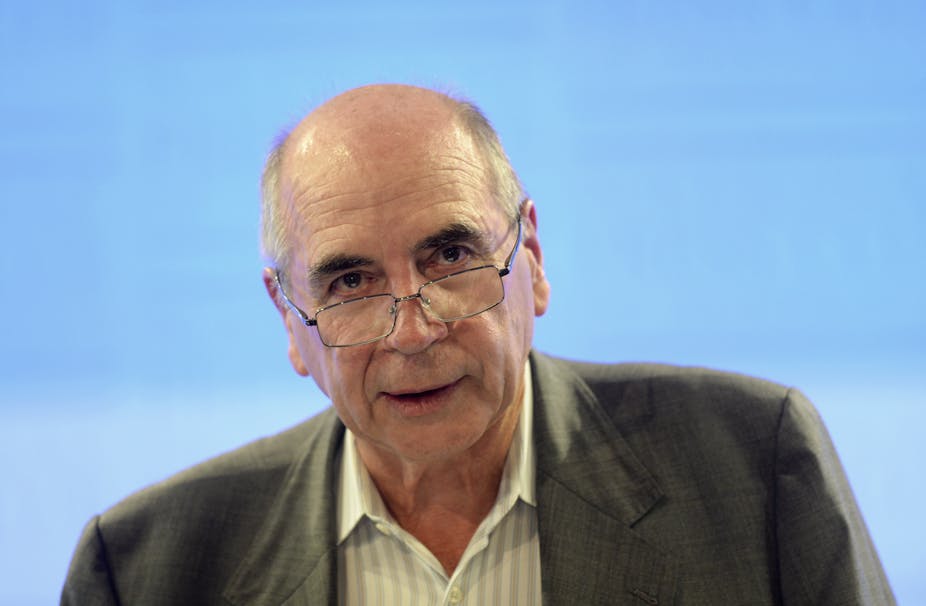Australia should pledge far deeper cuts to greenhouse gas emissions than its current target if it is to do its fair share in tackling climate change, according to a report released today by the Climate Change Authority, which advises the federal government on climate policy.
The report recommends that Australia pledge to reduce greenhouse emissions by 30% relative to 2000 levels by 2025, and should also set a more flexible target of 40-60% by 2030. The government is currently considering what Australia’s formal pledge should be, and is set to unveil its commitments later this year ahead of December’s United Nations climate talks in Paris.
The report’s recommended targets are much more ambitious than Australia’s current target, which aims for a 5% reduction in emissions relative to 2000 levels by 2020. But the new recommendations would be broadly in line with what other wealthy countries are doing, the report says.
Fair share
Climate Change Authority chair Bernie Fraser said a pledge to cut emissions by 30% by 2025 “would broadly put Australia on the same basis of effort as other comparable wealthy developed countries”, some of which have already revealed their intended targets.
The United States has pledged to cut its emissions by 26-28% relative to 2005 levels by 2025, whereas the European Union has a target of 40% under 1990 levels by 2030.

The report does not outline how much it would cost to meet the new, more ambitious targets, but rather aims to work out what Australia’s fair share would be in terms of helping the world meet the internationally agreed goal of limiting global warming to 2C.
“The cost will depend very much on the policy mix that is put in place. All we can say is that in terms of setting targets, the target of 30% for Australia is broadly comparable (with other nations),” Fraser said. “We’ll be trying to identify a package of measures that would make attainment of the target achievable without damage to the economy.”
Anna Skarbek, chief executive of ClimateWorks Australia, said cutting Australia’s emissions in half by 2030 is certainly possible.
“All the technologies needed to achieve that are already invented. Between now and 2030 it’s not major transformation that’s needed, it’s major acceleration. More renewables, beginning to use electric cars, and an acceleration of energy efficiency in homes as well as in industry,” she said.
Skarbek said her previous analysis shows that Australia can go entirely carbon-free by 2050, while still growing the economy at 2.4% a year.
Conservative approach
Peter Christoff, who studies climate policy at the University of Melbourne, said even the new recommended targets would be “a conservative contribution to efforts to limit global warming” compared with some other nations’ efforts.
“By 2030, the European Union is offering to cut its emissions by 40%, Norway by 40%, Switzerland by 50% and Germany by 55% – each using their 1990 emissions as a baseline. As Australia’s 2030 target is calculated from a higher emissions baseline (2000), its level of ambition is reduced accordingly,” he said.
“Australia, despite present budgetary pressures, can afford to make this effort more easily than many of its economic partners, which are nevertheless opting for high targets.”
He said the increasing reliability and cost-effectiveness of renewable energy, and effective energy-efficiency measures, were helping to make ambitious targets more achievable.
Christoff said Australia had more to lose from a failure to address climate change. “We are already experiencing record-breaking heatwaves, storms, fires and floods. The projected impacts of warming above 2 degrees are significantly more costly for Australia than the price of effective action now,” he said.
Even if the ultimate outcome is successful, 2C of warming “will deliver a devastating blow to our environment, economy and society” he said, adding that Australia should err on the side of caution by adopting the Climate Change Authority’s toughest recommendation of cutting emissions by 60% by 2030.
“Tougher action by Australia – the 60% upper limit for 2030 – would be exemplary leadership and better insurance against that hot future,” he said.
Science-led targets
Climate Change Authority member Clive Hamilton, a Professor of Public Ethics at Charles Sturt University in Canberra, said the recommendations were worked out using a “budget approach” based on a calculation of how to limit global warming to 2C.
“Setting targets without such an approach, as Australia currently does, is not credible because it does not recognise that what we do not do now we will have to do later, probably at higher cost because we will have to do it more quickly. The longer we delay the harder the necessary rates of emissions reductions become, until they become impossible,” he said.
“All of this is true unless one really is not committed to limiting warming to 2C because one does not accept the science of climate change. If the government does not set emission-reduction goals at least in line with those recommended by the Authority then it will be fair to conclude that it is not serious about Australia making a fair contribution to global efforts to avoid dangerous climate change.”


